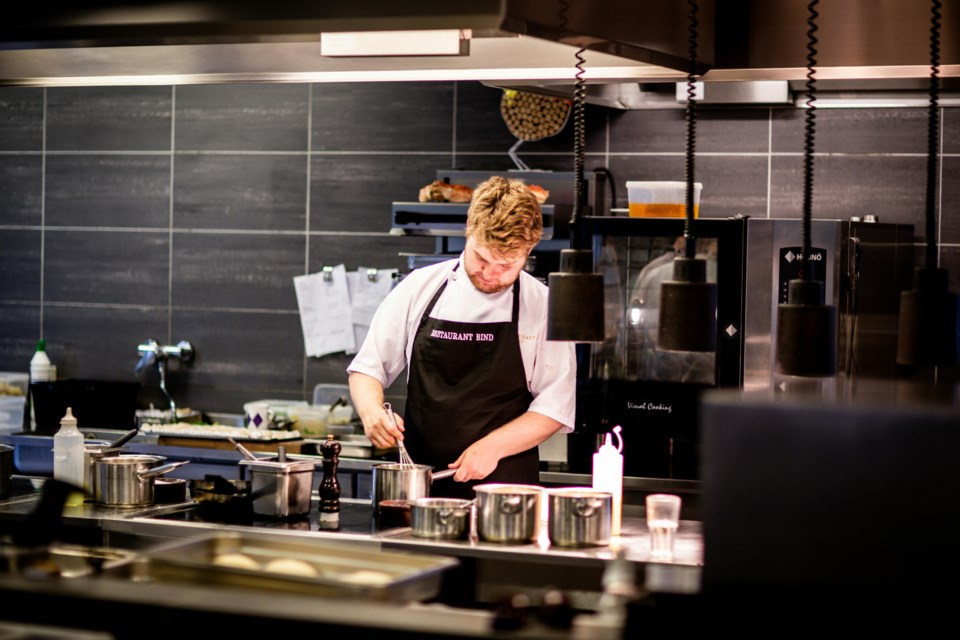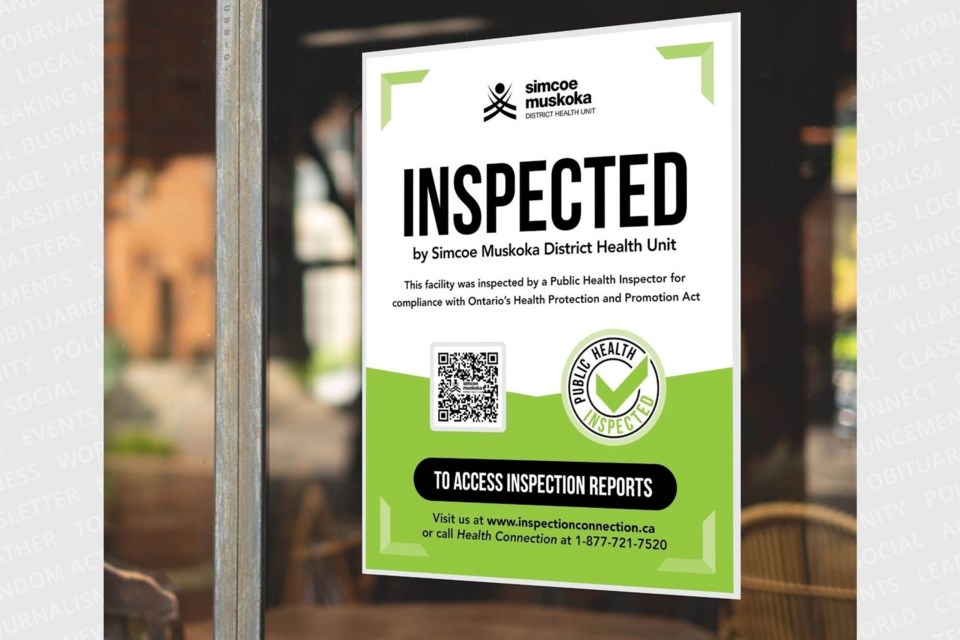Almost everybody enjoys the odd meal out, but if that dining experience goes south due to food poisoning it can lead to some serious issues.
That’s where the work of the Simcoe Muskoka District Health Unit’s Food Safety, Smoke-Free and Enforcement department comes in — by ensuring all facilities that serve food are following the proper health and safety guidelines to keep their customers free from illness.
Tony Makrostergios is the program manager for the department, which includes approximately 20 field inspectors responsible for examining local restaurants, animal bites, pools and hot tubs.
All of the health units in the province are required to follow the Ontario Public Health standards, which serves as a guide outlining the responsibility of health units, he said.
Within that framework are several protocols, one of which is the food safety protocols, Makrostergios noted, adding the goal is to ultimately reduce food-borne illness.
“There are requirements that we need to do surveillance on suspected or confirmed food-borne illness," he said, "and we do that by conducting inspections, following up on complaints (and through) reports from other health professionals, such as physicians or hospitals.”
The work his team does on a regular basis is important, Makrostergios acknowledged, as outbreaks can cause serious illness and even death.
“Certain things, like botulism or large-scale outbreaks, could cause a lot of illness, especially if it's a long-term care home or a child-care centre where immune systems are either not developed or have deteriorated," he said. "They have to be vigilant, because something as simple as a water test could ultimately make a lot of people sick

"That’s where we come in — to try to provide as much education as we can so that if something does happen we can try to minimize the extent of it.”
The inspection process begins by placing a food premise in one of four categories: high, moderate, low or super low.
For example, a facility that sells prepackaged, non-hazardous food, such as chips or pop, would only need an inspection once every couple of years.
“There’s nothing in terms of data that somebody would get sick from a bag of chips — not to say that it can’t happen, but the likelihood is a lot less than a high-risk setting where there are multiple preparation steps, raw products (or) refrigeration,” Makrostergios said.
All on-site visits are considered “surprise inspections,” he said, adding the only time one would be booked in advance would be if it’s inside a facility where additional security clearance or credentials is required.
Prior to attending, an inspector would review a facility in order to gather as much information as possible before they go in so they can plan accordingly, Makrostergiose explained.
“Typically, an inspector will go in — sometimes through the front, sometimes through the back — but a lot of times we don’t want to cause any disruption in business … the inspector will go in, introduce themselves and show proof of who they are … And then it starts.”
The time of day does also play into the inspection, he said, adding it’s expected that if a place is in the middle of a lunch rush, there will likely be a few things left out.
“A lot of it at the beginning is about watching how the staff prepare food. Are they washing their hands, using tongs or appropriate cleaner? You’re looking at sanitation. You’re looking at equipment … and then you can start doing a bit more hands-on stuff, such as taking the temperature of foods in the fridge or in walk-ins, verifying where the food comes from (and) ensuring garbage is not overflowing,” Makrostergios said.
“There’s a checklist that reminds inspectors to check off certain things, but it’s also based on their own observations, because nothing fits in one simple checklist," he added. "It really depends on what you see when you’re there and asking questions — and educating.”
Makrostergios says the goal of the inspector is ultimately to educate the staff and business owner.
Here in Simcoe-Muskoka, he says they follow a “progressive enforcement approach.”
Ideally, everything can be done through education, he added. However, if education fails, other options are utilized.
“Sometimes the owner/operator doesn’t know something is wrong or broken, so we give them the opportunity to fix it, depending on what it is," Makrostergios said.
If all else fails, orders or tickets can be issued.
With progressive enforcement, Makrostergios says the initial level of a charge is called a Part 1, which he compared to a speeding ticket.
That ticket is based on set fines from the provincial government.
“Sometimes you have to give two or three of them, depending on the situation. When you get repeat offenders ... then you do a Part 3 summons and that’s where they go to court and where the fines can get really big,” he said. “There are orders we can give, which is something that can be appealed, but stands until the appeal goes through. That is where there may be an emergency where the inspector feels they don’t have time to do up a ticket or fears if they leave there could be an immediate hazard.
"They can do a closure right then and there and follow up with the paperwork," added Makrostergios. "With an order, if you’re not compliant, they carry a penalty up to $25,000 per day. You never want to get to that, but these are all tools the inspector has to keep the public safe."
Ultimately, Makrostergios believes it’s important for the public to know that inspectors are only there for a “snapshot in time,” which is why they do their best to switch up the days and times they call on a business.
“We are not there all day, every day. We see what we see while we are there and that’s not always reflective of the operation.”
That’s where the public comes in, he said. Should someone believe they became ill from food they ate or something they saw at a local establishment, they’re always encouraged to first see their doctor, but also call the health unit at 705-721-7520 or 1-877-721-7520, or go online and make a report.
“The substantiation piece is important," said Makrostergios. "When people call in, it helps us to establish some sort of a pattern if there is one. The more information we have the better prepared we are with where we have to look.”
